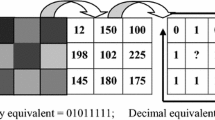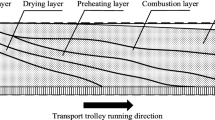Abstract
Image-based flame detection (IBFD) algorithms are effective in flame detection, and their advantages and disadvantages directly affect the accuracy and timeliness of flame detection. However, based on the existing research in China, the IBFD algorithm still lacks a clear standard for distinguishing advantages and disadvantages. This study adopted a fuzzy comprehensive hierarchical analysis method to establish an evaluation method for IBFD and to define the rating standards for 29 third-level evaluation indexes. A three-level index system was installed for algorithm evaluation, and the masses of needles at all levels were determined. An index system was used to assign indexes to the two flame identification algorithms in the YOLOv3 series. The algorithm evaluation was completed according to the mass of the algorithm index, which indicated the reliability and validity of the algorithm evaluation method. Therefore, this study established a set of methods for the performance evaluation of IBFD and thus laid a theoretical foundation for improving relevant standards for image-based flame detectors.


Similar content being viewed by others
Abbreviations
- a ij :
-
The lower limit of the interval (dimensionless)
- b ij :
-
The upper limit of the interval (dimensionless)
- x i :
-
Eigenvalues (dimensionless)
- A i :
-
Matrix vector (dimensionless)
- w j :
-
Row vector (dimensionless)
- W :
-
Mass vector (dimensionless)
- K :
-
Level matrix (dimensionless)
References
Zhang HJ, Zhang N, Xiao NF. Fire detection and identification method based on visual attention mechanism. Optik. 2015;126:5011–8. https://doi.org/10.1016/j.ijleo.2015.09.167.
Çelik T, Demirel H. Fire detection in video sequences using a generic color model. Fire Saf J. 2009;44:147–58. https://doi.org/10.1016/j.firesaf.2008.05.005.
Tan L, Lv X, Lian X, Wang G. YOLOv4_Drone: UAV image target detection based on an improved YOLOv4 algorithm. Comput. 2021;93:107261. https://doi.org/10.1016/j.compeleceng.2021.107261.
Zhang Z, Jin Q, Wang L, Liu Z. Video-based fire smoke detection using temporal-spatial saliency features. Procedia Comput Sci. 2022;198:493–8. https://doi.org/10.1016/j.procs.2021.12.275.
Huang L, Liu G, Wang Y, Yuan H, Chen T. Fire detection in video surveillances using convolutional neural networks and wavelet transform. Eng Appl Artif Intel. 2022;110:104737. https://doi.org/10.1016/j.engappai.2022.104737.
Schröder T, Krüger K, Kümmerlen F. Image processing based deflagration detection using fuzzy logic classification. Fire Saf J. 2014;65:1–10. https://doi.org/10.1016/j.firesaf.2014.02.004.
Li Y, Vodacek A, Zhu Y. An automatic statistical segmentation algorithm for extraction of fire and smoke regions. Remote Sens Environ. 2007;108:171–8. https://doi.org/10.1016/j.rse.2006.10.023.
Yu C, Mei Z, Zhang X. A real-time video fire flame and smoke detection algorithm. Procedia Eng. 2013;62:891–8. https://doi.org/10.1016/j.proeng.2013.08.140.
Marbach G, Loepfe M, Brupbacher T. An image processing technique for fire detection in video images. Fire Saf J. 2006;41:285–9. https://doi.org/10.1016/j.firesaf.2006.02.001.
Rosas-Romero R. Remote detection of forest fires from video signals with classifiers based on K-SVD learned dictionaries. Eng Appl Artif Intel. 2014;33:1–11. https://doi.org/10.1016/j.engappai.2014.03.011.
Hu Y, Zhan J, Zhou G, Chen A, Cai W, Guo K. Fast forest fire smoke detection using MVMNet. Knowl Based Syst. 2022;241:108219. https://doi.org/10.1016/j.knosys.2022.108219.
Mohajane M, Costache R, Karimi F, Bao Pham Q, Essahlaoui A, Nguyen H. Application of remote sensing and machine learning algorithms for forest fire mapping in a mediterranean area. Ecol Indic. 2021;129:107869. https://doi.org/10.1016/j.ecolind.2021.107869.
Wang Y, Yu Y, Zhu X, Zhang Z. Pattern recognition for measuring the flame stability of gas-fired combustion based on the image processing technology. Fuel. 2020;270:117486. https://doi.org/10.1016/j.fuel.2020.117486.
Xu W, Wooster MJ, He J, Zhang T. Improvements in high-temporal resolution active fire detection and FRP retrieval over the Americas using GOES-16 ABI with the geostationary fire thermal anomaly (FTA) algorithm. Remote Sens. 2021;3:100016. https://doi.org/10.1016/j.srs.2021.100016.
Li P, Zhao W. Image fire detection algorithms based on convolutional neural networks. Case Stud Therm Eng. 2020;19:100625. https://doi.org/10.1016/j.csite.2020.100625.
Li P, Yang Y, Zhao W, Zhang M. Evaluation of image fire detection algorithms based on image complexity. Fire Saf J. 2021;121:103306. https://doi.org/10.1016/j.firesaf.2021.103306.
Wei YY, Zhang JY, Wang J. Research on building fire risk fast assessment method based on fuzzy comprehensive evaluation and SVM. Procedia Eng. 2018;211:1141–50. https://doi.org/10.1016/j.proeng.2017.12.121.
Zhao Y, Li Q, Gu Z. Early smoke detection of forest fire video using CS adaboost algorithm. Optik. 2015;126:2121–4. https://doi.org/10.1016/j.ijleo.2015.05.082.
Liu Z, Zhang K, Wang C, Huang S. Research on the identification method for the forest fire based on deep learning. Optik. 2020;223:165491. https://doi.org/10.1016/j.ijleo.2020.165491.
Singh KR, Neethu KP, Madhurekaa K, Harita A, Mohan P. Parallel SVM model for forest fire prediction. Soft Comput. 2021;3:100014. https://doi.org/10.1016/j.socl.2021.100014.
Wang SD, Miao LL, Peng GX. An improved algorithm for forest fire detection using HJ data. Procedia Environ. 2012;13:140–50. https://doi.org/10.1016/j.proenv.2012.01.014.
Rao GN, Jagadeeswara Rao P, Duvvuru R, Bendalam S, Gemechu R. An enhanced real-time forest fire assessment algorithm based on video by using texture analysis. Perspect Sci. 2016;8:618–20. https://doi.org/10.1016/j.pisc.2016.06.037.
Xie S, Dong S, Chen Y, Peng Y, Li X. A novel risk evaluation method for fire and explosion accidents in oil depots using bow-tie analysis and risk matrix analysis method based on cloud model theory. Reliab Eng Syst Saf. 2021;215:107791. https://doi.org/10.1016/j.ress.2021.107791.
Qu N, Li Z, Li X, Zhang S, Zheng T. Multi-parameter fire detection method based on feature depth extraction and stacking ensemble learning model. Fire Saf J. 2022;128:103541. https://doi.org/10.1016/j.firesaf.2022.103541.
Wu H, Zhang A, Han Y, Nan J, Li K. Fast stochastic configuration network based on an improved sparrow search algorithm for fire flame recognition. Knowl Based Syst. 2022;245:108626. https://doi.org/10.1016/j.knosys.2022.108626.
Cho S, Cha BH, Gawecki M, Jay Kuo CC. Block-based image steganalysis: algorithm and performance evaluation. J Vis Commun Image Rep. 2013;24:846–56. https://doi.org/10.1016/j.jvcir.2013.05.007.
Wooster MJ, Xu W, Nightingale T. Sentinel-3 SLSTR active fire detection and FRP product: pre-launch algorithm development and performance evaluation using MODIS and ASTER datasets. Remote Sens Environ. 2012;120:236–54. https://doi.org/10.1016/j.rse.2011.09.033.
Che L, Zhang Y, Wang J, Bai M. A new method for deriving weights in group fuzzy analytic hierarchy process and evaluation measures. IFAC. 2020;53:7941–6. https://doi.org/10.1016/j.ifacol.2020.12.2183.
Han B, Ming Z, Zhao Y, Wen T, Xie M. Comprehensive risk assessment of transmission lines affected by multi-meteorological disasters based on fuzzy analytic hierarchy process. Int J Electr Power Energy Syst. 2021;133:107190. https://doi.org/10.1016/j.ijepes.2021.107190.
Acknowledgments
This project was supported by National Natural Science Foundation of China (Grant no. 51904229), the Natural Science Basic Research Program of Shaanxi (Grant no. 2020JQ-753). We wish to express our sincere thanks to these organizations.
Author information
Authors and Affiliations
Contributions
All the authors contributed to the specific ideas and assumptions of the study. YY, X-FW, M-YP, PL and Y-TT completed the data induction and analysis. The first draft was written by X-FW: all the authors participated in the discussion of the previous version. All authors viewed and identified the final manuscript.
Corresponding author
Additional information
Publisher's Note
Springer Nature remains neutral with regard to jurisdictional claims in published maps and institutional affiliations.
Rights and permissions
Springer Nature or its licensor (e.g. a society or other partner) holds exclusive rights to this article under a publishing agreement with the author(s) or other rightsholder(s); author self-archiving of the accepted manuscript version of this article is solely governed by the terms of such publishing agreement and applicable law.
About this article
Cite this article
Yang, Y., Wang, XF., Pan, MY. et al. Evaluation on algorithm reliability and efficiency for an image flame detection technology. J Therm Anal Calorim 148, 5063–5070 (2023). https://doi.org/10.1007/s10973-023-12012-8
Received:
Accepted:
Published:
Issue Date:
DOI: https://doi.org/10.1007/s10973-023-12012-8




